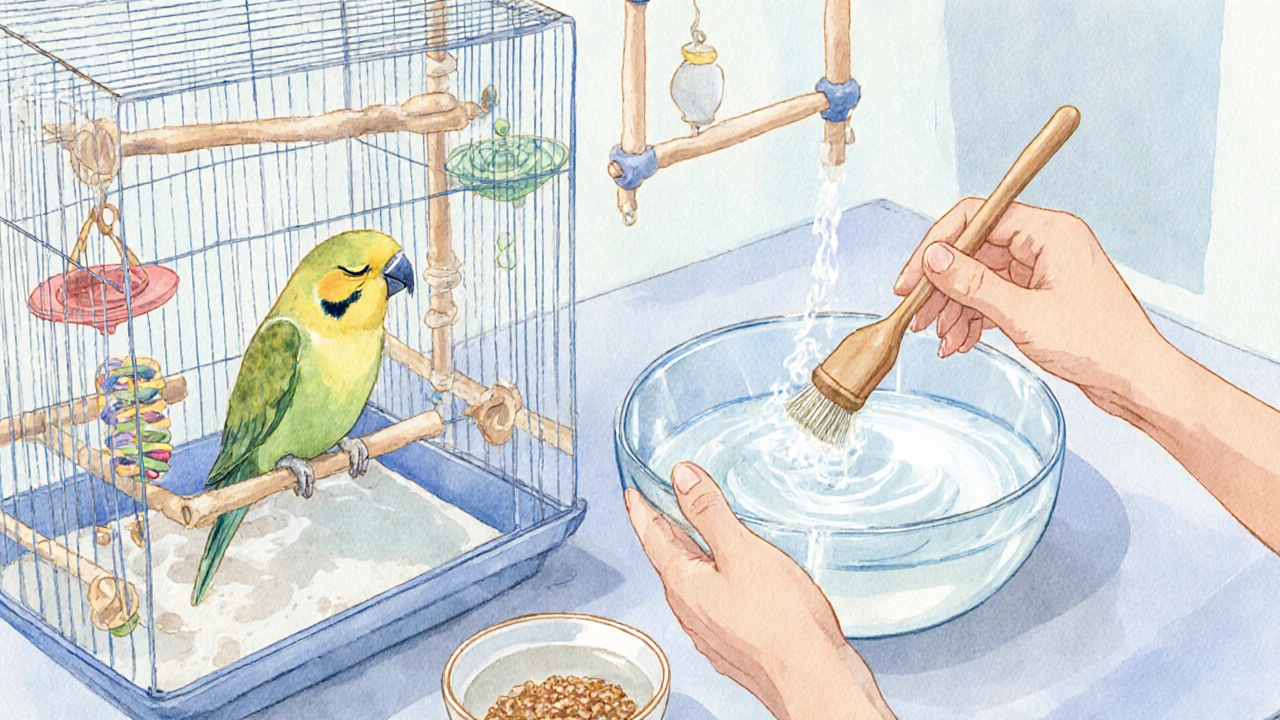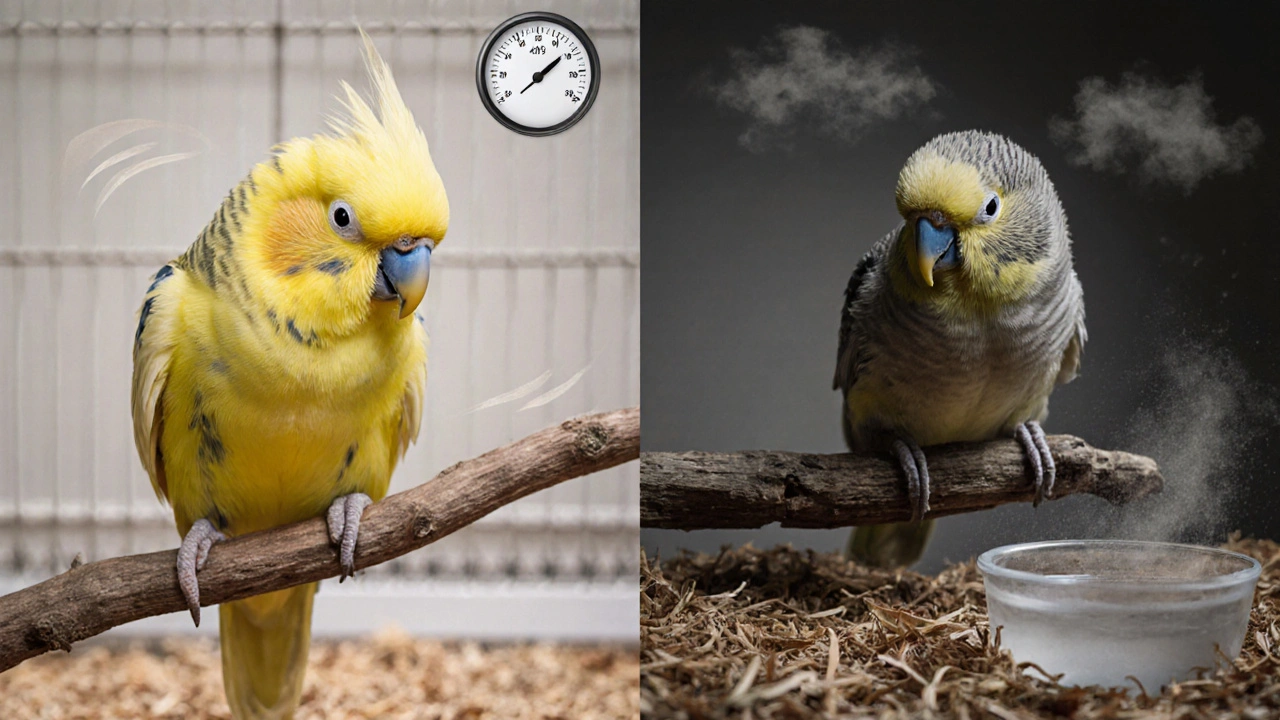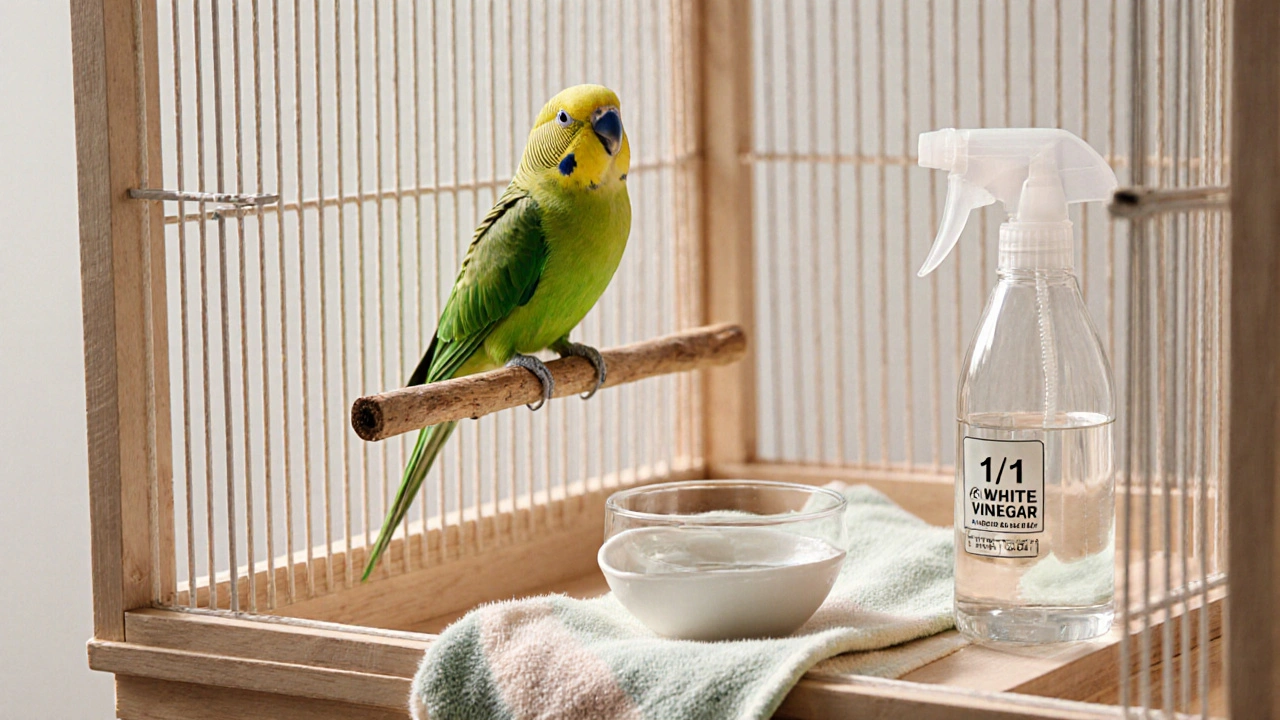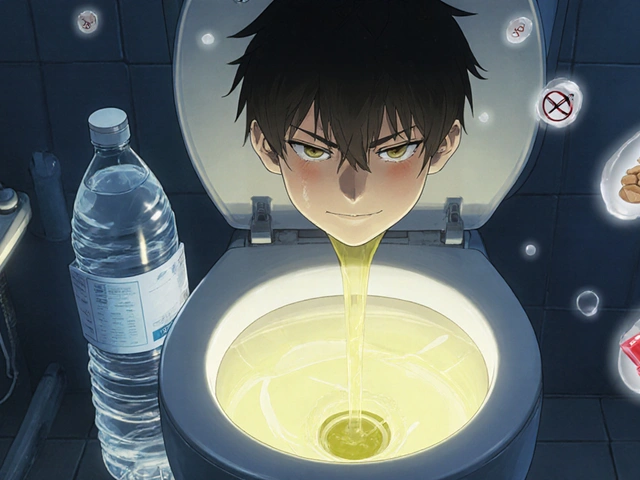Bird Cage Cleaning Estimator
Personalized Cleaning Schedule
Enter your cage details to get recommended cleaning frequencies
When it comes to bird cage cleaning is the process of keeping a pet bird’s living space free of waste, mold, and harmful microbes, the goal is simple: keep feathers healthy and stop deplumation before it starts.
Key Takeaways
- Spot‑clean daily and deep‑clean weekly to avoid feather loss.
- Use bird‑safe cleaning solutions-vinegar and hydrogen peroxide work well.
- Choose the right substrate and replace it regularly.
- Monitor humidity, ventilation, and UV light for optimal feather health.
- Watch for early signs of deplumation and act fast.
Why a Clean Environment Stops Deplumation
A bird’s feathers are more than just decoration; they regulate temperature, protect skin, and aid flight. When waste, dust, or mold builds up, it can trigger skin irritation, respiratory issues, and stress-all of which push a bird toward deplumation.
Research from the Avian Veterinary Association (2024) shows that birds kept in cages cleaned less than once a week are 2.5times more likely to develop feather‑picking behavior.
Daily Maintenance Checklist
- Remove uneaten food bowl (usually a plastic or ceramic container) and rinse it with warm water.
- Swap the water dish (a glazed ceramic bowl that prevents bacterial growth) with fresh water.
- Wipe any visible droppings from perches and cage bars using a damp paper towel.
- Check the substrate (e.g., paper, bark, or coconut fiber) for damp spots and replace if needed.
- Inspect the perch (often a natural wood branch) for mold or burrs.

Weekly Deep‑Cleaning Routine
Set aside an hour once a week for a full clean‑out. Here’s the step‑by‑step process:
- Move your bird (any species of pet bird) to a safe temporary cage..
- Disassemble the cage: remove perches, toys, food bowl, and water dish.
- Scrub the cage interior with a cleaning solution that’s safe for birds (e.g., 1part white vinegar to 1part water). Avoid scented detergents.
- Rinse thoroughly with warm water and let dry completely-moisture invites mold.
- Sanitize perches and toys using the same solution or a dilute hydrogen peroxide mix (1% concentration).
- Replace the substrate with a fresh, low‑dust option such as recycled paper.
- Reassemble the cage, refill fresh water and food, and return the bird.
Choosing the Right Cleaning Solution
Not all cleaners are bird‑friendly. Below is a quick comparison of the most common options.
| Solution | Safety Rating | Cost (per litre) | Pros | Cons |
|---|---|---|---|---|
| White vinegar (5% acidity) | High | $1.20 | Natural, antibacterial, cheap | Strong smell (dissipates quickly) |
| Diluted hydrogen peroxide (1%) | High | $2.00 | Breaks down mold spores, leaves no residue | Can discolor some plastics if left too long |
| Commercial bird‑safe disinfectant | Medium‑High | $4.50 | Formulated for avian use, includes fragrance‑free options | More expensive, check active ingredients |
| Plain soap‑free detergent | Medium | $1.75 | Easy to find, rinses well | May leave mild residue if not rinsed thoroughly |
For most hobbyists, a 1:1 mix of white vinegar and water hits the sweet spot between safety and effectiveness.
Managing Substrate and Waste
The substrate does more than hide droppings; it absorbs moisture and can affect air quality. Choose a low‑dust option like paper pulp or newspaper strips. Avoid pine shavings-they release phenols that irritate a bird’s respiratory system.
Replace the substrate completely every 3-4days for small cages and every 7days for larger aviaries. If you notice a sour smell, swap it out immediately; that’s a sign of bacterial growth that can trigger feather loss.

Ventilation, Humidity, and UV Light
Good airflow prevents stale air and reduces the buildup of ammonia from droppings. Keep the cage away from direct drafts but ensure at least one opening per side for cross‑ventilation.
Relative humidity between 40% and 60% is ideal for most pet birds. Use a hygrometer to monitor levels; a moist environment can encourage mold on perches and substrate.
UV‑B lighting mimics natural sunlight, helping birds synthesize vitaminD₃ which supports feather health. A 10‑hour daily cycle on a low‑intensity UV‑B bulb (e.g., 5.0% output) is sufficient for most species.
Spotting Early Signs of Deplumation
Early detection makes treatment easier. Look for these red flags:
- Feather dullness or uneven coloration.
- Small bald patches, especially on the chest or tail.
- Increased preening or feather‑picking behavior.
- Scratching the skin or frequent bathing in the water dish.
- Changes in appetite or energy levels.
If you notice any of these, double‑check the cage’s cleanliness, replace the substrate, and consider a short break from perches that may be rough.
Putting It All Together: A Sample Weekly Schedule
| Day | Task |
|---|---|
| Monday | Spot‑clean food bowl, water dish, and perches. |
| Tuesday | Check substrate moisture; replace if damp. |
| Wednesday | Wipe cage bars with damp cloth. |
| Thursday | Inspect perches for mold; clean if needed. |
| Friday | Rotate toys to keep the bird mentally stimulated. |
| Saturday | Deep‑clean the entire cage (see weekly routine). |
| Sunday | Monitor feather condition and note any changes. |
Following a routine like this not only keeps the environment fresh but also builds a habit that’s easy to maintain.
Frequently Asked Questions
How often should I replace the water dish?
Change the water at least once a day and scrub the dish with a bird‑safe solution weekly. Stagnant water quickly becomes a breeding ground for bacteria that can irritate a bird’s skin and feathers.
Can I use scented cleaners on the cage?
No. Birds have a highly sensitive respiratory system. Even mild fragrances can cause irritation, leading to stress‑related feather loss. Stick to unscented, bird‑approved solutions.
What substrate is best for preventing mold?
Recycled paper pulp or newspaper strips work well because they are low‑dust and change color when damp, giving you a visual cue to replace it.
Is it okay to let my bird bathe in the water dish?
Yes, many birds enjoy bathing, but ensure the dish is deep enough to cover their wings and refresh the water frequently to keep it clean.
What are early signs of a feather‑picking problem?
Look for small bald spots, especially on the chest, tail, or wings, and watch for excessive preening or nibbling of feathers.





Ready to turn cage cleaning into a daily power‑up? Your bird’s feathers deserve a stage‑worthy shine, so grab that vinegar and get scrubbing. Spot‑cleaning each morning wipes out grime before it becomes a stress trigger, and the routine keeps your feathered friend feeling like royalty. Stick to the schedule and watch the plumage stay glossy and vibrant.